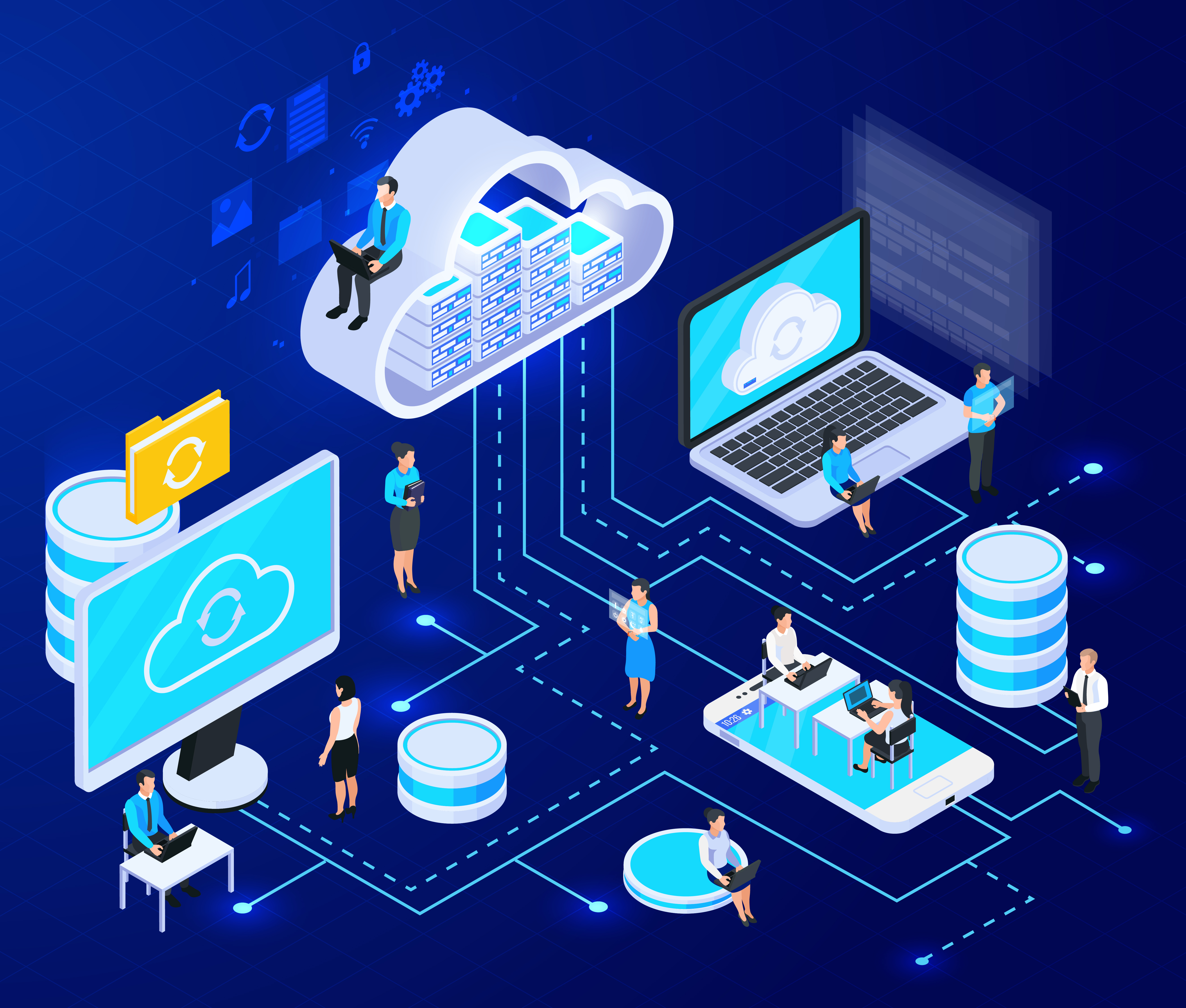With the ongoing technological advancements, the variety, velocity, and volume of data in corporate data stores are growing exponentially. Employees work, access, and update the data in store over the Internet from numerous locations, which creates security threats. This implies that corporate data processing and management becomes a challenge of an ever-increasing magnitude.
Therefore, every business needs to find the most effective way to process this ever-increasing influx of data in order to make it serve the business objectives best-a cost-efficient and smart way is to leverage cloud computing capabilities. However, businesses must be aware of the fundamentals to use innovative data processing solutions effectively.
An Insight into Data Processing in the Cloud
Data processing in Data Storage: Data is typically stored on the cloud, either in object storage systems or cloud-based databases, or data lakes. Organizations can choose the most suitable solution for their data from a range of storage options with different characteristics such as availability, durability, and performance.
- Data Storage: Data is typically stored on the cloud, either in object storage systems or cloud-based databases, or data lakes. Organizations can choose the most suitable solution for their data from a range of storage options with different characteristics such as availability, durability, and performance.
- Data Ingestion: In the first step of the data processing cycle, data is ingested from various sources into the cloud. This can involve gathering data from IoT devices, transferring data from on-premises systems, or integrating data from external sources. Cloud platforms provide tools and services such as direct data transfer mechanisms, data pipelines, message queues, etc. to facilitate data ingestion.
- Data Transformation and Preparation: Data needs to be transformed and prepared for analysis once it is on the cloud. This involves data cleaning, applying quality checks, joining multiple datasets, aggregating, or disaggregating data, or enriching it with additional information. Cloud platforms offer multiple data transformation tools, including ETL (Extract, Transform, Load) and data integration frameworks.
- Data Analysis and Computation: Cloud data processing platforms have numerous computational resources and tools for data analysis, which include specialized data processing services, distributed computing frameworks like Apache Spark or Apache Hadoop, or serverless computing platforms. Organizations can leverage these resources to build machine learning models, perform statistical analysis, run complex analytical queries, or conduct real-time stream processing.
- Data Visualization and Reporting: After pooling and processing data, organizations need to visualize the results and generate reports for further analysis or decision-making. You can leverage data visualization tools to create interactive visualizations, customize reports, and share insights with stakeholders.
- Data Storage and Archiving: The processed data now has to be stored on the cloud for future reference or archival purposes. Cloud storage offers durability and scalability for long-term data retention, eliminating the need for on-premises storage infrastructure.

Opportunities for Cloud-based Data Processing
Data processing on the cloud offers numerous opportunities to businesses as listed here:
- Scalability: Cloud platforms offer unlimited computing resources virtually, letting organizations scale their data processing capabilities as needed. Hence, large volumes of data can be efficiently processed without the need for significant upfront investments in infrastructure.
- Cost Savings: Cloud computing offers a pay-as-you-go model, where organizations only have to pay for the resources they consume. This eliminates the need for upfront hardware investments, allowing companies to optimize their data processing costs based on actual usage. Besides, cloud solutions offer scalability at lower costs compared to on-premises solutions.
- Seamless Collaboration: Major big organizations have their teams situated in different corners of the world. Cloud-based data processing allows teams to seamlessly access and collaborate on data regardless of their geographical location. Multiple users can work concurrently, fostering effective collaboration and improving overall productivity. Cloud-based platforms also have advanced sharing and access control mechanisms to meet security and compliance standards.
- Advanced Analytics: Cloud providers offer a wide range of data processing and analytics services including Machine Learning, Artificial Intelligence, and Big Data frameworks. Organizations can leverage these powerful tools and frameworks to gain valuable insights, perform complex data analysis, and drive data-driven decision-making.
Challenges of Data Processing on the Cloud
- Data Security and Privacy: Storing and processing sensitive data on the cloud raises concerns about data security and privacy. Organizations need to implement robust security measures, including encryption, access controls, and data governance policies, to protect data from unauthorized access, breaches, and other security threats.
- Network Dependence: Cloud-based data processing heavily relies on internet connectivity. A stable and reliable network connection is crucial for efficient data transfer between local systems and the cloud. Network disruptions or latency issues can impact data processing performance and availability.
- Data Transfer and Latency: Moving large volumes of data across the cloud can be expensive and time-consuming, especially when dealing with slow internet connections or limited bandwidth. Optimizing data transfer mechanisms and minimizing data transfer latency is essential to maintain processing efficiency.
- Vendor Lock-In: Adopting cloud-based online data processing solutions can result in vendor lock-in, where enterprises become heavily dependent on a specific cloud provider’s ecosystem and proprietary tools. Bringing data-processing back in-house or migrating to a different provider can be complex and costly, limiting vendor choice and flexibility.
- Compliance and Regulatory Challenges: There are numerous data compliance and regulatory requirements. As different industries or regions have different requirements, adhering to the regulations like GDPR (General Data Protection Regulation) or HIPAA (Health Insurance Portability and Accountability Act) can be challenging. Organizations need to carefully evaluate the service provider’s compliance capabilities as well as establish appropriate data governance practices.
Conclusion
To conclude, data processing on the cloud presents ample opportunities for scalability, cost savings, seamless collaboration, and advanced analytics. At the same time, organizations must address challenges related to data security, data transfer latency, network dependence, vendor lock-in, and regulatory compliances to leverage the benefits of cloud-based data processing effectively.
The post Data Processing on the Cloud: Opportunities and Challenges appeared first on Datafloq.

